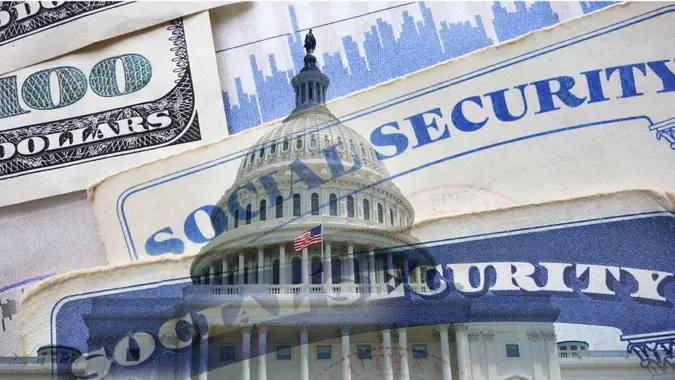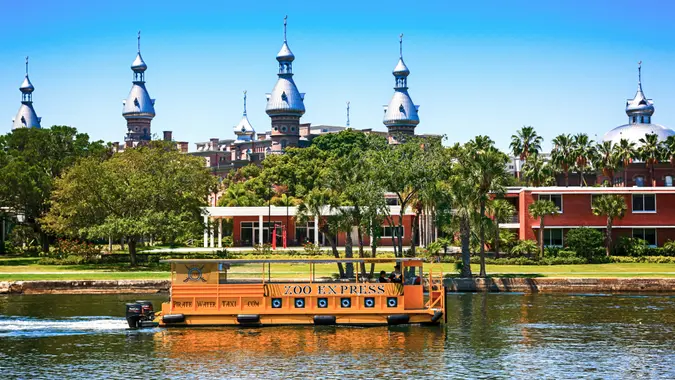Why Owning a Car in These 5 States Could Wreck Your Retirement Plans

Commitment to Our Readers
GOBankingRates' editorial team is committed to bringing you unbiased reviews and information. We use data-driven methodologies to evaluate financial products and services - our reviews and ratings are not influenced by advertisers. You can read more about our editorial guidelines and our products and services review methodology.

20 Years
Helping You Live Richer

Reviewed
by Experts

Trusted by
Millions of Readers
When it comes to having a car, the purchase or lease price is only part of the story. All the essential extras like insurance, fuel and repairs quickly stack up, and it might come as a surprise to learn that the amounts people pay can vary by state.
The Car Ownership Cost Index 2025 from 5 Star Car Title Loans looks at those costs, normalizing expenses into a 0-100 scale, where 100 represents the most affordable state and 0 represents the least affordable. New Hampshire ranks as the cheapest state with an average annual cost of $10,213 and an index score of 100. Louisiana ranks worst with annual costs of $14,626 and a score of 0.
Here are the five states where car costs are the biggest drain of potential retirement savings.
Louisiana
- Cost Index score: 0
- Annual ownership cost: $14,626
- Estimated retirement savings needed: $843,603
Louisiana has the highest insurance premiums in the country, averaging $3,718, plus high average monthly loan payments of $726. The fact the state’s cost index score is 0 shows just how much local drivers are paying.
Florida
- Cost Index score: 22.20
- Annual ownership cost: $13,647
- Estimated retirement savings needed: $977,296
Florida’s average insurance bill of $3,536 is likely to do with storm-related claims pushing premiums up. The state is popular for retirees, but to retire here needs almost $1 million in savings, so every dollar spent on cars reduces the amount left for long-term planning.
California
- Cost Index score: 24.87
- Annual ownership cost: $13,529
- Estimated retirement savings needed: $1,612,716
Drivers in California spend over $2,000 a year on gas, along with $2,848 for insurance. Pair that with a retirement savings target over $1.6 million and it’s easy to see how much of an impact car ownership could have on people’s retirement plans.
Wyoming
- Cost Index score: 27.70
- Annual ownership cost: $13,404
- Estimated retirement savings needed: $872,144
As the least populated U.S. state, with only six people per square mile, according to NCHStats, it’s no wonder that average annual fuel costs for Wyoming drivers are so high ($2,610).
Georgia
- Cost Index score: 32.74
- Annual ownership cost: $13,181
- Estimated retirement savings needed: $813,559
Insurance premiums of $2,410 and fuel expenses close to $2,000 keep Georgia’s ownership costs high.
How Much the Gap Really Costs
The difference between Louisiana and New Hampshire is $4,413 a year. Over 20 years that adds up to $88,260 in lost savings. If invested with a 6% annual return, the total would grow to more than $160,000. Stretch that to 30 years and it’s over $350,000. That kind of money could cover a major share of retirement costs in states like Georgia or Louisiana, yet it’s being drained year after year by higher ownership expenses.
Estimated savings requirements from GOBankingRates research.
More From GOBankingRates
 Written by
Written by  Edited by
Edited by 

























